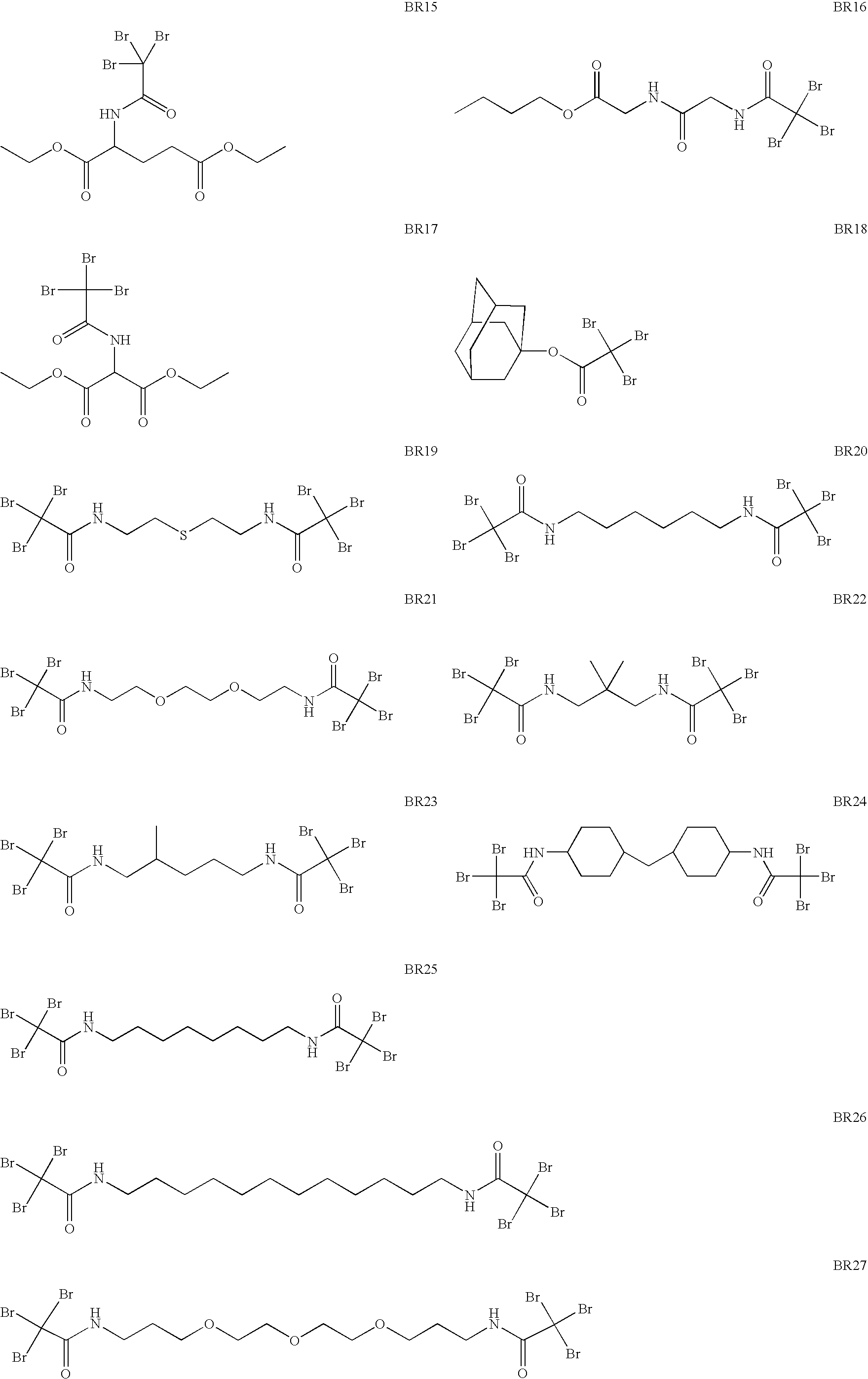Image formation method of planographic printing plate material
- Summary
- Abstract
- Description
- Claims
- Application Information
AI Technical Summary
Benefits of technology
Problems solved by technology
Method used
Image
Examples
example 1
Synthesis of Polymer Binder
Synthesis of Acryl Copolymer 1
[0101]Thirty parts of methacrylic acid, 50 parts of methyl methacrylate, 20 parts of ethyl methacrylate, 500 parts of isopropyl alcohol, and 3 parts of α,α′-azobisisobutyronitrile were put in a three neck flask under nitrogen atmosphere, and reacted under nitrogen atmosphere for 6 hours at 80° C. in an oil bath. After that, the reaction mixture was refluxed at a boiling point of isopropyl alcohol for one hour, and 3 parts of triethylammonium chloride and 25 parts of glycidyl methacrylate were further added to the mixture, and reacted for additional 3 hours. Thus, acryl copolymer 1 was obtained. The weight average molecular weight of the acryl copolymer 1 was 35,000, measured according to GPC. The glass transition temperature Tg of the acryl copolymer 1 was 85° C., measured according to DSC (differential thermal analysis).
Preparation of Support
[0102]A 0.3 mm thick aluminum plate (material 1050, quality H16) was degreased at 60°...
example 2
[0113]A photopolymerizable light sensitive layer was coated on the support in the same manner as in Example 1, except that M-3 as the addition polymerizable ethylenically unsaturated monomer was replaced with M-5, and the photopolymerization initiator and spectral sensitizing dye were replaced with those shown in Table 2. Then, the following oxygen shielding layer coating solution 1 was coated on the photopolymerizable light sensitive layer using an applicator, and dried at 75° C. for 1.5 minutes to give an oxygen shielding layer with a dry thickness of 1.8 g / m2.
Oxygen Shielding Layer Coating Solution 1
[0114]
Polyvinyl alcohol (GL-05, produced89 partsby Nippon Gosei Kagaku Co., Ltd.)Water soluble polyamide (P-70,10 partsproduced by Toray Co., Ltd.)Surfactant (Surfinol 465,0.5 parts produced by Nisshin Kagaku Kogyo Co., Ltd.)Water900 parts
[0115]After that, the following dyestuff-containing overcoat layer coating solution 1 was coated on the resulting oxygen shielding layer using an a...
PUM
 Login to View More
Login to View More Abstract
Description
Claims
Application Information
 Login to View More
Login to View More - R&D Engineer
- R&D Manager
- IP Professional
- Industry Leading Data Capabilities
- Powerful AI technology
- Patent DNA Extraction
Browse by: Latest US Patents, China's latest patents, Technical Efficacy Thesaurus, Application Domain, Technology Topic, Popular Technical Reports.
© 2024 PatSnap. All rights reserved.Legal|Privacy policy|Modern Slavery Act Transparency Statement|Sitemap|About US| Contact US: help@patsnap.com










